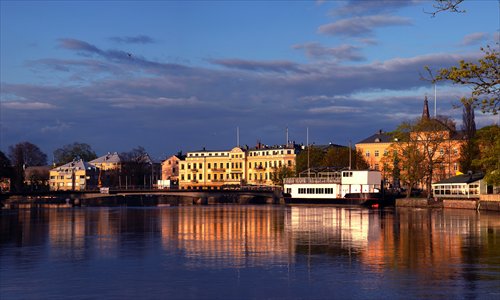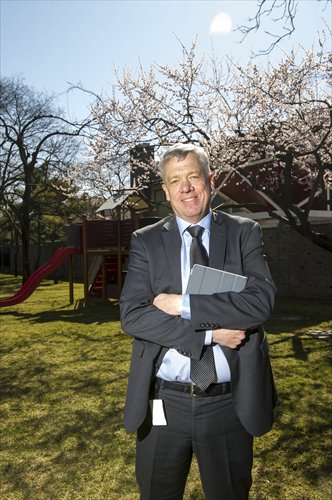Green and growing

A snapshot of Stockholm, Sweden. Photo: CFP

Swedish Minister Counselor Anders Wollter. Photo: Li Hao/GT
In the middle of March, at the Sino-Swedish Beijing Air Pollution Control Workshop held at the Beijing Municipal Environmental Publicity Center, environmental authorities from both China and Sweden shared their experiences and challenges in environmental protection, a topic of worldwide concern.
During the event, Anders Wollter, the Swedish minister counselor of trade, environment and climate of the Swedish Embassy, shared with the Global Times (GT) his perspective on the environmental connections between the two countries.
Before being appointed to this position in 2011, Wollter held a number of positions in the diplomatic service, where he has worked since 1984
GT: What can China learn from Sweden in terms of the reduction of carbon emissions?
Wollter: That drastically reduced carbon emissions can be combined with high growth and sustainable development. In the 1950s to 1970s, a period of rapid industrial growth, Sweden faced the same challenges as China does today. We saw how environmental degradation could actually threaten sound economic development, not to say the quality of living. Over 40 years we managed to cut carbon emissions by 50 percent while still having a GDP growth of 100 percent over the period.
GT: Things like unbalanced geographical development and a population shift from rural areas to big cities are contributing to pollution in places like Beijing. What can we learn from Sweden about this?
Wollter: We had to face very rapid urbanization and de-population of rural areas during a period of 20 to 25 years until the mid 1970s. Massive construction of new residential areas took place. A lot of emphasis was put on developing city planning with a "holistic" approach. This means creating systems that integrate various modern technologies, but it also meant doing all we can to make both new areas and the existing cities modern and livable. The "livable" objective certainly posed challenges, but the long-term vision in the planning and anchoring with the population helped. At the same time, industrial development and restructuring contributed to significantly better work environments.
GT: If China had all the latest technology it needs on environmental protection, what else do you think would be a barrier for China to go green?
Wollter: With China's drive and ability for mobilization, lack of resources does not seem to be a bottleneck. Also, on the industrial side, lean resource utilization will sooner or later pretty much happen automatically because of the savings it brings. In my view, one important additional success factor would be the use of elaborated long-term city and energy planning. The Swedish view that city planning is both an engineering feat and a social science has clearly been a success factor for us. Technologies work best together when they are combined in overlapping systems and when they are put in a context. For example, inhabitants see that their waste is converted into biogas that fuels the city buses that people actually like to ride instead of having expensive cars because the city is compact and livable. Another success factor which we have experienced is the satisfaction of smart use of scarce resources - "less is more" - and the general public's acceptance of this principle.
GT: Did Stockholm ever experience heavy smog like Beijing is facing now? If so, how was it overcome?
Wollter: Stockholm is not surrounded by mountains on several sides, but in the 1950s the air pollution was quite bad and certainly unhealthy. Each house had its own coal or oil burner. Modern district heating was introduced in virtually all houses, and already that did a big part of the trick. Better gasoline and catalytic converters, congestion charges for cars and replacing diesel buses with biogas buses also contributed. Today Stockholm is one of the cleanest cities in the world. Our lake, Mälaren, by the way, used to be a stinking pool. Today we can swim in it safely in clean water even in central Stockholm. A midnight swim there during a summer night with near daylight is one of the best things you can do.
GT: What shape is Chinese-Swedish environmental cooperation taking?
Wollter: Not only have we created a good network of contacts with central and regional stakeholders in China, but we also helped create partnerships between Swedish and Chinese organizations and local governments to promote sustainable urbanization. Of course we also paved the way for good business.
GT: Do you live your life in a way that is eco-friendly in Beijing?
Wollter: I try to. I do not have a car. My Chinese bike is the best one I ever had and I use it whenever I can. I wish that it would be possible to recycle more of my family's household waste - a very valuable commodity! - but I am sure that this will be possible in Beijing in the future. Good technologies that people like to use already exist.
GT: Also, how do you protect yourself from the air pollution in town?
Wollter: I try to keep fit, I look for food with good antioxidants and I wear a PM2.5 mask when the Air Quality Index level is over 100 or 120.